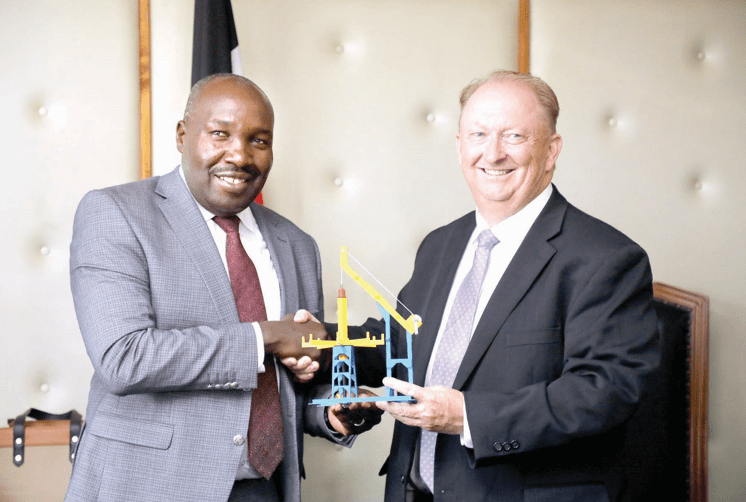State looks forward to full water coverage by 2030

The government is looking for Sh300 billion to attain 100 per cent water coverage for the country in the next six years and revealed there are various projects in the water sector at the disposal of the private sector to sample for possible investment.
The current national water coverage is at 72 per cent. In view of this, the Ministry of Water has invited the private sector to sample the projects for possible investment through the Public Private Partnership (PPP) arrangement.
Water Principal Secretary Julius Korir said yesterday the Ministry – in a Universal Water Access Plan – is looking for money to address the coverage deficit of 28 per cent. He said at Maji House, the plan requires up to an estimated Sh1 trillion for comprehensive water coverage by 2030.
“Kenya is at 72 per cent water coverage for the country’s population, within the closest proximity of their homes, and the Ministry’s goal and plan is to have accelerated access to 100 per cent by 2030,” Korir said when he received a delegation of water sector captains of industry and humanitarian organisations from Kenya and the US.
Water challenges
This is ahead of a meeting tomorrow in Kisumu where water stakeholders from the public and private sectors under WHOlives are convening to discuss solutions to global water challenges, to be followed by site visits to areas mapped out for water drilling using human-powered expertise, Village Drill Hybrid technology.
Mike Anderson, director of operations for the human-powered Village Drill revealed that already this technology has witnessed two boreholes sunk in Migori and Kisii, awaiting two more in two schools in Kisumu County tomorrow.
“We have the solution for getting clean water to rural communities. Now faster and more powerful, our proven and patented technology is absolutely the best option for drilling low-cost boreholes,” said Anderson who was accompanied by two investors from the US.
Development partners
The PS revealed that in the costed Universal Water Access Plan, the government and development partners will finance up to 70 per cent; 30 and 40 per cent respectively.
He said in the costed plan, there’s a normal government allocation which is ongoing that will account for 30 per cent with the development partners chipping in through various forms of support in terms of loans, grants and blended financing. This, Korir said, is projected to account for another 30-40 per cent.
“Now, we hope to get the remaining 30 per cent through inviting the private sector into funding some of the projects, and the government will only be left to provide a guarantee so that they can earn out of that,” he said welcoming initiatives such as WHOlives will be added advantage in the government’s quest to avail water to Kenyans.
“Thus, initiatives such as what we are witnessing here this morning are part of the role of the private sector in ensuring that water coverage is achieved across the country,” noted the PS.
He revealed that the Ministry has launched a number of PPP projects, with 10 of them at various stages of evaluation with a view to awarding them to the private sector so that they can implement and sell water to water service providers, in order to recoup their investments.
Out of the 10, there’s one for Malindi and another one for the entire Coastal region, Nairobi, Nakuru and all these projects, Korir said are going at a very good pace, and about three are expected to be commissioned before the end of the year.
“So the private sector is invited, we have a policy, and a law supporting the PPPs and so the task is for the private sector to pick from the wide variety of projects at our disposal,” he added. WHO lives is planning to sink up to 2000 wells in the country and has applied for a Sh131.5 million ($1 million) grant from the Organisation of the Petroleum Exporting Countries (OPEC) Fund to actualise this investment.











